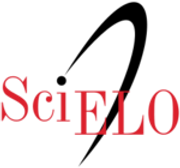La arquitectura como respuesta a los requerimientos de la salud. El caso del Hospital Dos de Mayo (1868-1875)
DOI:
https://doi.org/10.21754/devenir.v11i21.1486Palabras clave:
hospitales, ventilación, volumen de aireResumen
La arquitectura peruana de mediados del siglo XIX está representada en grandes obras que el Estado realizaba en beneficio de los ciudadanos. Entre ellas, el hospital se convierte en el depositario de la salud pública. El objetivo del presente artículo es demostrar que el proyecto del moderno Hospital Dos de Mayo (1868-1875) incluyó en el diseño de las salas de pacientes dos nuevos parámetros: la ventilación y los volúmenes de aire por paciente, tal como se dictaba en los tratados europeos desde el siglo XVIII, que estuvieron vigentes incluso en el siglo XIX.
Para la presente investigación se ha realizado la búsqueda de los tratados de arquitectura que Mateo Graziani, arquitecto del hospital, tuvo como referentes y donde estén considerados los factores de ventilación y volúmenes de aire que, en aquellas épocas, se creían necesarios.
Luego, de planos y documentos del Hospital Dos de Mayo, se realizó el cálculo de los volúmenes de aire por paciente y una comparación con el requerimiento de volúmenes de aire que demandaban dichos tratados.
Se concluye que el diseño de las enfermerías (o salas de pacientes) del Hospital Dos de Mayo obedece a los parámetros inscritos en los tratados hospitalarios del siglo XVIII.
Descargas
Citas
Alzamora, V. (1963). Mi Hospital. Historia, tradiciones y anécdotas del Hospital Dos de Mayo. Talls.
Gráfs. P.L. Villanueva.
Bails, B. (1783). Elementos de matemáticas. Tomo IX, que trata de la arquitectura civil. Joachin Ibarra,
Impresor de Cámara de S. M. y de la Real Academia. www.books.google.com
Diario El Comercio. (2 de mayo de 1868). [Artículo sin título]. Diario El Comercio. Biblioteca Nacional
del Perú.
Diario El Peruano. (17 de diciembre de 1859). Inauguración de la casa de amentes. Diario El Peruano.
Biblioteca Nacional del Perú.
Diario El Peruano. (26 de junio de 1868). Crónica de la Capital: Nuevo Hospital. Diario El Peruano.
Biblioteca Nacional del Perú.
Fernández, M. (2006). Aproximación a la historia de la arquitectura hospitalaria. Fundación Universitaria
Española.
Foucault, M. (1978). Incorporación del Hospital en la Tecnología Médica. Conferencia en el Instituto
de Medicina Social, Río de Janeiro (1978). Revista Educación Médica y Salud, pp. 20-35.
Fuentes, M. (1858). Estadística General de Lima. Tipógrafo Nacional de M.N. Corpancho. www.
books.google.com
Gaceta Médica de Lima. (1868). N.° 270. Tipografía por José Enrique del Campo. Biblioteca Nacional
del Perú.
Gaceta Médica de Lima. (1868). N.° 271. Tipografía por José Enrique del Campo. Biblioteca Nacional
del Perú.
García Bryce, J. (1980). La Arquitectura en el Virreinato y la Republica. Juan Mejía Baca.
Giddens, A. (1993). Consecuencias de la Modernidad. Alianza Editorial.
Harth-Terré, E. (1964). Hospitales Mayores en Lima, en el primer siglo de su fundación. Separata de
Anales N.º 16 del Instituto de Arte Americano e Investigaciones Estéticas.
Lossio, J. (2003). Acequias y gallinazos: salud ambiental en Lima del siglo XIX. Instituto de Estudios
Peruanos.
Milizia, F. (1813). Principii di Architettura Civile. Giuseppe Remondini e Figli Editrici. www.books.
google.com
Ramón, G. (2015). Urbe y Orden. Evidencias del reformismo borbónico en el tejido limeño. En S.
O’Phelan (Ed.), El Perú en el siglo XVII. La Era Borbónica (pp.299-328). Instituto Riva Agüero.
Ricci, G. y D’Amia, G. (2002). La Cultura Architettonica Nell’Etá della Restaurazione. Editorial Mimesis.
Sociedad de Beneficencia de Lima. (1868). Margesí de Bienes.
Tenon, M. (1788). Memories Sur le hospitaux. De L’imprimeur Ordinaire du Roi, &c. www.gallica.bnf.fr

Descargas
Publicado
Cómo citar
Número
Sección
Licencia
Derechos de autor 2024 Devenir - Revista de estudios sobre patrimonio edificado

Esta obra está bajo una licencia internacional Creative Commons Atribución 4.0.
Los artículos publicados por DEVENIR pueden ser compartidos a través de la licencia pública internacional Creative Commons: CC BY 4.0. Permisos lejos de este alcance pueden ser consultados a través del correo revistas@uni.edu.pe










